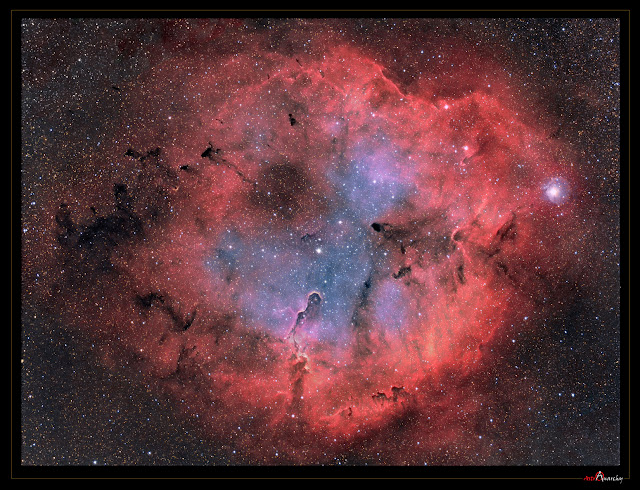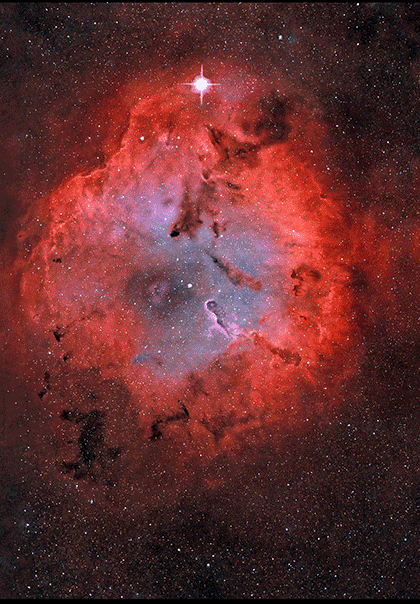Create a free profile to get unlimited access to exclusive videos, sweepstakes, and more!
Jaw-dropping rotating 3D nebula

A little over 2000 light years away, toward the constellation of Cepheus, is a place where stars are being born. It's a nebula, a gas cloud, and it's called IC 1396. It's monstrous, well over a hundred light years across - even at its tremendous distance, it's wider than six full Moons in our sky.
Finnish astrophotographer J-P Metsävainio observed IC 1396, making a gorgeous image of it. But he wasn't satisfied just doing that. He'd been playing with making 3D images for some time, and decided this might be a good opportunity to make a model of the structure of the nebula, and then create an animated GIF of it.
The results are... well, see for yourself:
Holy. Haleakala! [The filesize is 7Mb, so it may take a while to load.]
OK, let me be clear: this is not actually showing you the 3D structure of the nebula. It's an approximation, a guess based on various assumptions on how nebulae are shaped. J-P broke the image up into layers, made a surface model of it, then remapped it all into different frames seen from different angles. He then put those together to make the animated GIF you see here.
The structure may not be completely real, but it's still awesome... and it gives you a sense of the shape and composition of the gas cloud. The star in the center is the ionizing source; that is, it's a hot, young, massive star blasting out ultraviolet light, and that's what's making the nebula glow. The dark ribbons are filaments of dust which absorb optical light (the kind of light we see). Many of them seem to point toward the central star. That's because at their head is a dense clump of matter, and that's getting eaten away by the light and fierce winds from that hot star. Material from the clump gets blown back and away from the star, like sandbars in a stream. It's a very common structure in nebulae like this.
One thing that is pretty accurate is how the gas in the interior is blue, and red on the outside. This nebula used to be more filled with gas, but as the stars switched on inside it, their combined winds blew out a cavity, turning this filled sphere into a shell. Not a completely empty one, though: some gas remains inside, and its proximity to the central stars allows the oxygen in the gas to glow blue. Farther out, the starlight is too weak to make oxygen glow, so all you see is the ruddy glow from hydrogen.
I'll note the bright star just above the nebula is mu Cephei, a massive red supergiant, one of the most luminous stars in the Milky Way - possibly over 300,000 times more luminous than the Sun! It may or may not be at the same distance as the nebula - its distance is difficult to measure - though in J-P's animation it shows up as being closer.
Here's what the nebula looks like in the original, 2D image:

Pretty, isn't it?
This sort of modeling is fascinating, and really stunning. I'm not sure there's scientific value to it just yet - like I said, it's more art than science, since the structure you see is a guess. Still, I love the aesthetic of it. J-P has created several anaglyphs of celestial objects, and really all his astronomical imaging is lovely, and worth your time to peruse.
Tip o' the Hα filter to PierreKerner. Image credit:
Related Posts:
- An ionized rose would smell as sweet
- A stunning star factory for Hubbleâs 22nd!
- Rudolph the red-dusted Strömgren sphere
- Location, location, location



























